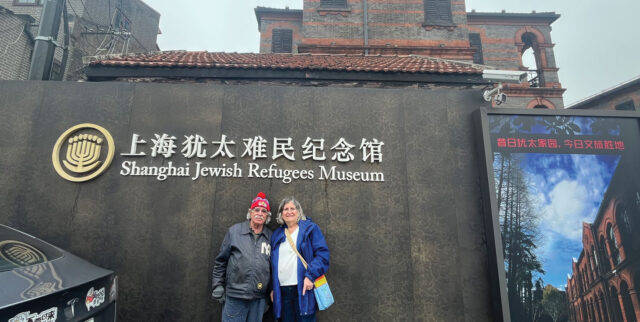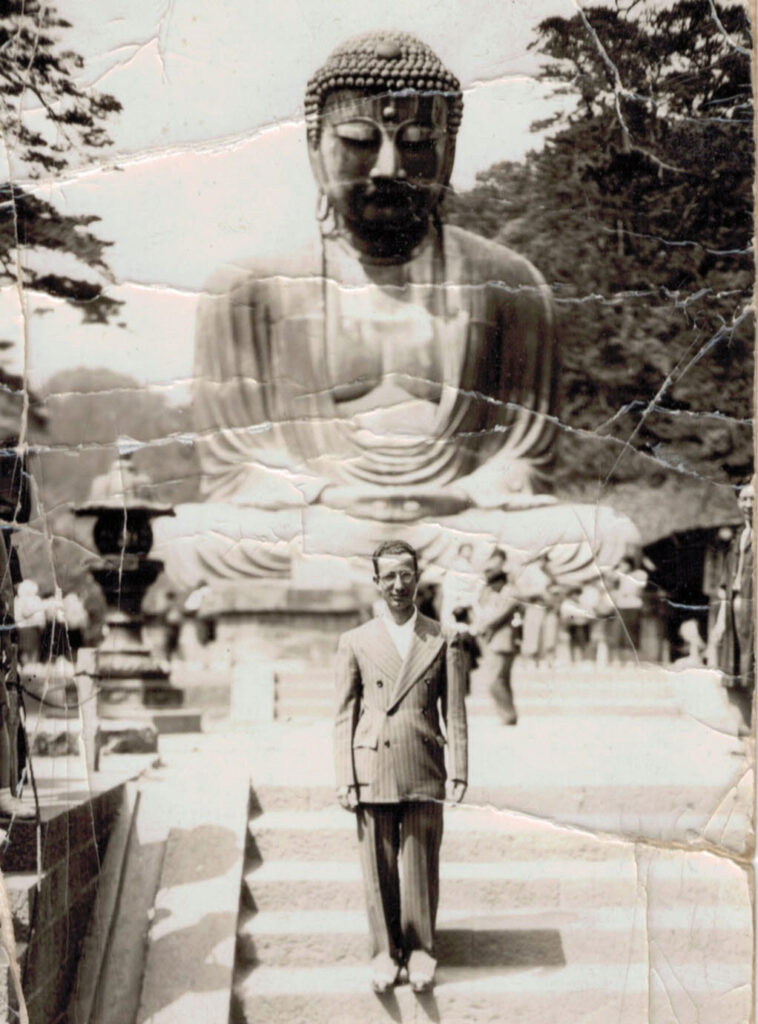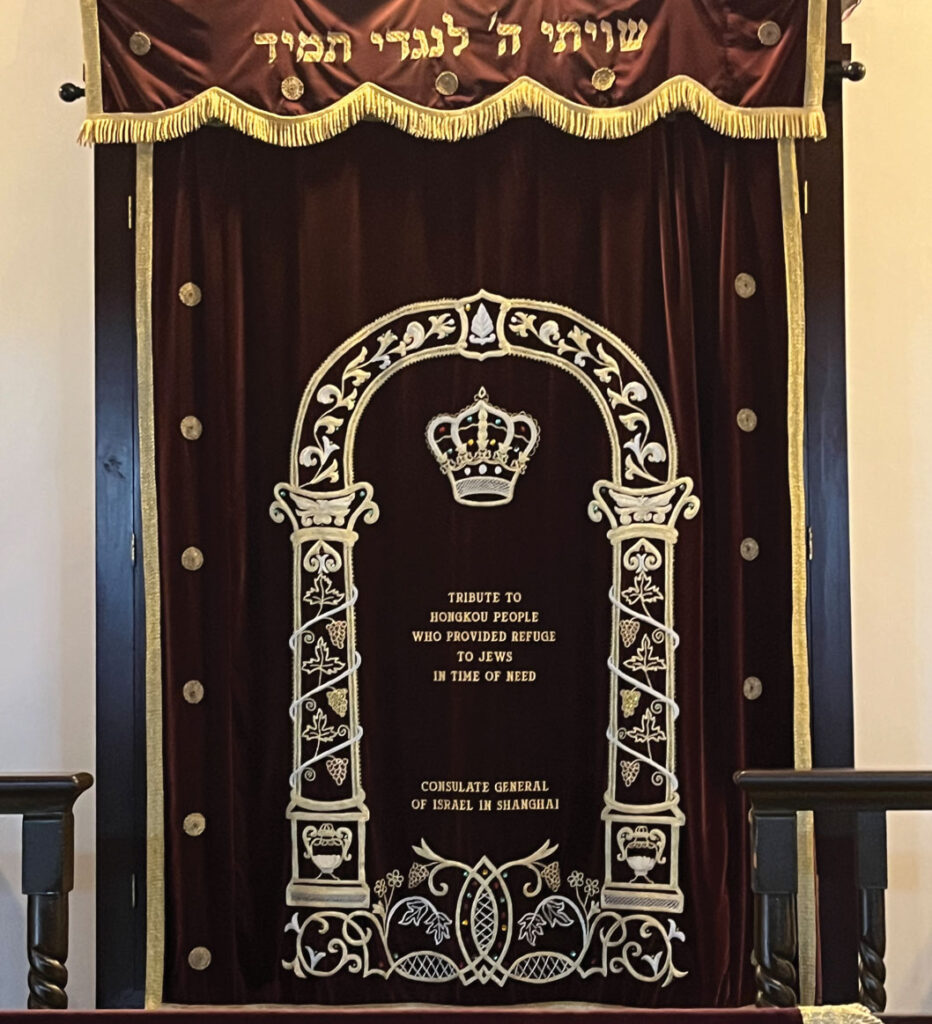
SARINA ROFFÉ
THE LURE OF CHINA AND THE FAR EAST HAS ENTICED ME SINCE MY OLDER TWO CHILDREN TRAVELED THERE AFTER COLLEGE. I WAS LURED BY THE CULTURE, THE GREAT WALL OF CHINA, THE TERRACOTTA WARRIORS, THE ELEPHANTS IN THAILAND AND THE BEACHES OF PHUKET. THERE IS SO MUCH TO SEE, EXPERIENCE AND LEARN OF THIS WORLD I COULD NOT WAIT ANY LONGER.
I have traveled to many places – Europe, North and Central Africa, Israel, South America and all 50 U.S. states, but the Far East always seemed too far. My husband David doesn’t like trips longer than 10 to 12 days and going to the Far East for that short a time did not make sense due to the very long flights.
This being our 50th anniversary year, we took the plunge, a three-week trip to China and Thailand. It took a lot of planning and we had to be sure we had kosher food along the way. With help from Rabbi Sammy Kassin, dean of Sephardic Study Center (SSC) in Israel, and the rabbis he has in the Far East, we managed to get kosher meals every few days.
SSC Rabbi Natanel Meodod of Kowloon was of enormous help, as was Joey Habert. He gave me many tips that helped us be comfortable. For example, all the hotels have teapots to heat up water. So we brought our own coffee and creamer. This was a good tip for people like us who are particular about our morning coffee. Hard boiled eggs were readily available at breakfast. I can say that when you are kosher, a trip like this is not one where I would have high expectations of kosher gourmet food.
Somehow, we managed though. In Beijing, we picked up food from the Chabad, as we happened to meet Rabbi Freundlich on the plane. Rabbi Kassin sang his praises.
In Shanghai, we were provided with food from SSC Rabbi Effie Besalel. His lovely wife Faigy sent us a generous supply of food, making our Shabbat wonderful! They had a synagogue and restaurant and we knew we would trust the kashrut. In Pattaya, Thailand, we had a wonderful meal at the synagogue and kosher restaurant with Rabbi David Marciano, another SSC rabbi. The last days of our journey were in Phuket, where there is a local Chabad. We were well taken care of all along our trip.
BACK TO THE TRIP ITSELF. WHAT DID WE SEE? WHAT WAS JEWISH? WHAT DID WE LEARN?
There is nothing Jewish about Xi’an, where we saw the Terracotta Warriors, or Beijing, where we visited the Great Wall of China, as well as other historical sites in those cities. We learned so much it would take a book to share it, as I did on a daily blog posted on my Facebook page. Everywhere I travel, I always look for the Jewish presence. Did Jews live there? Is there a synagogue or cemetery?
Here is what I want to share.
SHANGHAI
Shanghai is a dynamic bustling and very large port city, the epicenter of economic activity in China. David and I took a Jewish tour of Shanghai and learned of the long history of the Jewish community there, as well as the city’s part in helping over 30,000 Jews escape the Nazis during World War II.


The first Jewish community in Shanghai was established by Sephardic Jews from Syria and Baghdad in the late 19th Century. Among the first families were the Sassoons and Kadoorie. The Baghdadi Jewish community of Shanghai published local news and big ideas in Israel’s Messenger (IM), an English-language newspaper that was edited for many years by N.E.B. Ezra, a religious Jew and energetic Zionist from a well-known and well-connected Baghdadi Jewish family. Shanghai’s Baghdadi Jewish community established the Shanghai Zionist Association in 1903, ten years before the first Zionist organization was set up in Iraq.
Ohel Moshe Synagogue was opened in 1927. For a long time, Shanghai was one of the few places in the world that unconditionally offered refuge for Jews escaping from the Nazis. In 1938, 31 out of 32 countries refused to take in Jewish refugees after Kristallnacht. The only way for Jews to escape from Nazism was to leave Europe. In order to leave, they had to provide proof of emigration, usually a visa from a foreign nation, or a valid boat ticket.




A Chinese diplomat — Ho Feng-Shan — started to issue transit visas to Shanghai, under Japanese occupation except for foreign concessions. Twelve hundred visas were issued by Ho in only the first three months of holding office as Consul-General. While you didn’t need a visa to enter Shanghai, the visa was necessary to leave Austria. By the end of October 1938, Ho had issued more than 1,900 visas.
After the Japanese occupied all of Shanghai in 1941, the Japanese army forced about 23,000 of the city’s Jewish refugees to be restricted or relocated to the Shanghai Ghetto from 1941 to 1945 by the Proclamation Concerning Restriction of Residence and Business of Stateless Refugees. It was one of the poorest and most crowded areas of the city.
The Shanghai Jewish Refugees Museum commemorates the Jewish refugees. It is located at the former Ohel Moshe or Moishe Synagogue, in the Tilanqiao Historic Area of Hongkou district, Shanghai, China.
The synagogue was in the Shanghai Ghetto, formally known as the Restricted Sector for Stateless Refugees, an area of approximately one square mile (2.6 km2 in Japanese-occupied Shanghai and it formed part of the Shanghai International Settlement).
The Joint Distribution Committee and local Jewish families helped the refugees with food, shelter and clothing as well as a soup kitchen. These families lived in very crowded places, but they were thankful they were alive and knew that the Chinese had it worse than they did. The Japanese closed Shanghai to Jewish immigration in August 1941.
There is a garden where there were walls and walls with the names of Jews who lived in Shanghai during World War II. They only collected about 18,000 names but they know that at least 30,000 were accepted and had safe haven. Most of these people were devastated to learn they had lost their entire families in the Holocaust, and have fond memories of their time in Shanghai.

We also visited the Peace Hotel, which was built by the Sassoons, a castle built by David Moller, and other sites. The castle was built because his daughter always wanted to live in a castle, so he built it for her. The construction and material is very unique. Nothing like it exists anywhere else in Shanghai. Moller was a shipping magnate. There was a lovely pond and what was left of a horseback riding path. Moller’s daughter loved to ride. Across the street from the Music Conservatory was a very beautiful Jews only club. Shanghai has beautiful parks and the Jews could hang out in the parks, while the Chinese were not permitted to.
A SPECIAL MOMENT
The synagogue was a special moment for David. His father, Simon Roffé A”H, lived in Manila in the late 1930s and had been imprisoned by the Japanese in Los Banos, a prisoner of war camp, for the duration of the war. Many Syrian Jews had business in the Philippines, but unfortunately, Simon was caught preparing to leave. Thankfully he survived.
During Simon’s time in Manila, he traveled to several of the places we visited and some we had not, like Japan. We know he visited the Shanghai Synagogue before the war and David sat in the seats, noting it’s probably where his father sat during his visit in 1939.
MOVING ON
After Shanghai, our trip took us to Bangkok and Pattaya, where we had a lovely meal with SSC Rabbi David Marciano on Rosh Chodesh Adar. There were about 50 people in the synagogue, many of them lived there while others traveled through. We finished our 3-week trip in Phuket.
The SSC also has Jewish Centers in Manila and Guam. Hopefully we will get there one day. Right now, I am glad to be home.
A genealogist and historian, Sarina Roffé is the author of Branching Out from Sepharad (Sephardic Heritage Project, 2017). She is researching a new book: Syria – Paths to Freedom. Sarina holds a BA in Journalism, and MA in Jewish Studies and an MBA.



